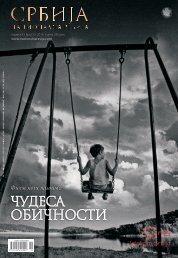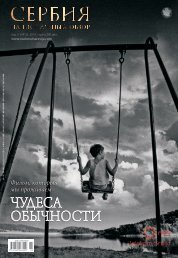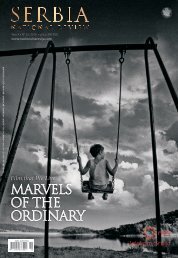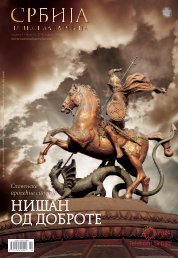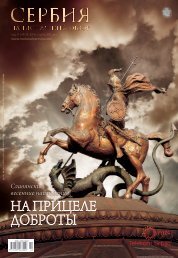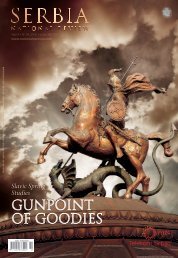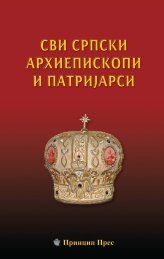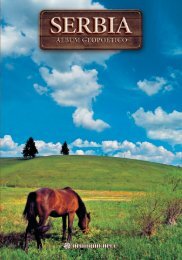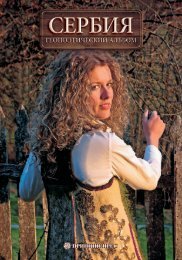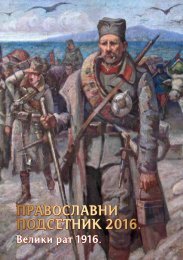Monografija - prvo izdanje - niska rezolucija
You also want an ePaper? Increase the reach of your titles
YUMPU automatically turns print PDFs into web optimized ePapers that Google loves.
су слова исписана уметничким слагањем цигли. У унутрашњости<br />
грађевине јасно се види, као и раније место олтара. Само је<br />
уклоњен иконостас (...) Тај хришћански карак тер „џума-џамије”<br />
толико је фрапантан и непријатан самим муслиманима да врло<br />
ретко и нерадо улазе у њу.”<br />
(Александар Ф. Гиљфердинг, Путовање по Херцеговини,<br />
Босни и Старој Србији, НИУ Службени лист СРЈ, 1996, Београд)<br />
Један други руски путописац Павел Аполонович Ровински,<br />
у својим Записима о Србији 1868–1869 далеко више мари о<br />
свак одневици, а најпре о породици и породичним односима и<br />
обичајима. Врло су духовита, али често и заједљива, запажања<br />
о односима муж–жена–свекрва–заова, где обично жена извлачи<br />
најдебљи крај, ако није по вољи заови или свекрви, а у сва ком<br />
случају им није по вољи, закључује Ровински. Женска еман ци паци<br />
ја у Србији му је честа тема.<br />
„Српска жена још увек живи под тортуром мушкарца,<br />
али је у Београду она знатно еманципованија и мужевљев разуздани<br />
живот може да му се освети јер жена има право да се<br />
разведе. Митрополит Београдски у вези с тим има много посла,<br />
при чему у Београду, и уопште у градовима, развод траже жене<br />
а у селима – мужеви...”<br />
the capital of the Serbian Empire were taken from them. I have<br />
already said that a great monastery of the Holy Archangels under<br />
Dušan’s city was destroyed by the Turks in order to build a mosque.<br />
The large and beautiful church of St. Petka, in the lower part of the<br />
city, which was allegedly built by Emperor Dušan, was simply transformed<br />
into a mosque.<br />
Moreover, Muslims didn’t even try to hide the traces of the<br />
previous Christian purpose of the building. Above the church, the<br />
bell-tower still rises like before. On the north wall could be seen, like<br />
before, the text “Sava of Serbia” with the letters written with the<br />
artistic composition of the bricks. In the interior of the building, the<br />
place of the altar is clearly visible, just like in earlier times. Only the<br />
iconostasis is removed (…) That Christian character of “the jumamosque”<br />
is so shocking and unpleasant to the Muslims themselves<br />
that they rarely and unwillingly go inside.”<br />
Aleksandar Giljferding, Voyage through Herzegovina,<br />
Bosnia and Old Serbia, NIU, Službeni list SRJ, 1996, Belgrade<br />
Another Russian travel book author, Pavel Antonovich Rovinsky,<br />
in his “Notes about Serbia 1868–1869”, cares more about the<br />
everyday life, and, above all, about the family, family relationships and<br />
74



